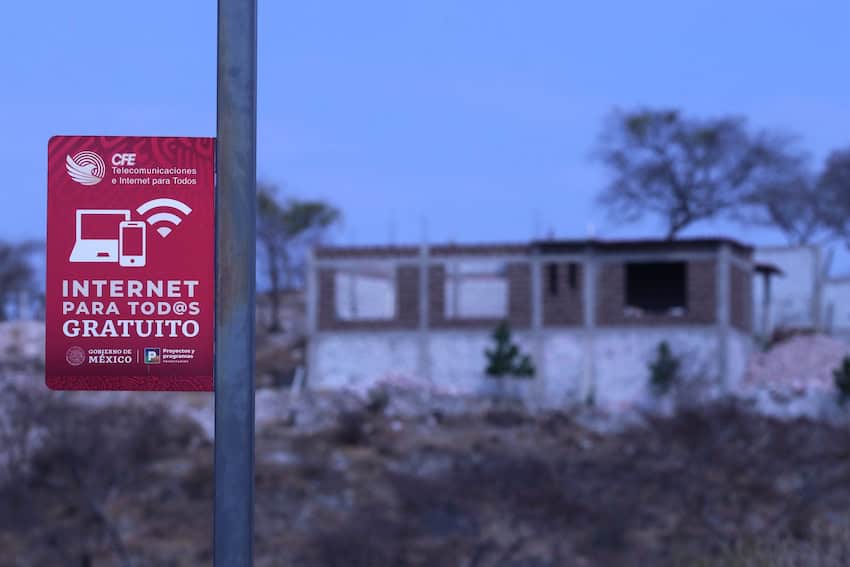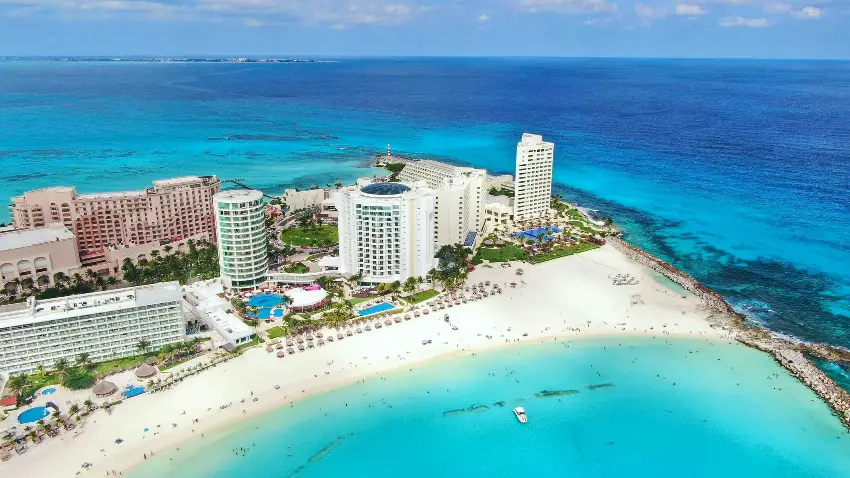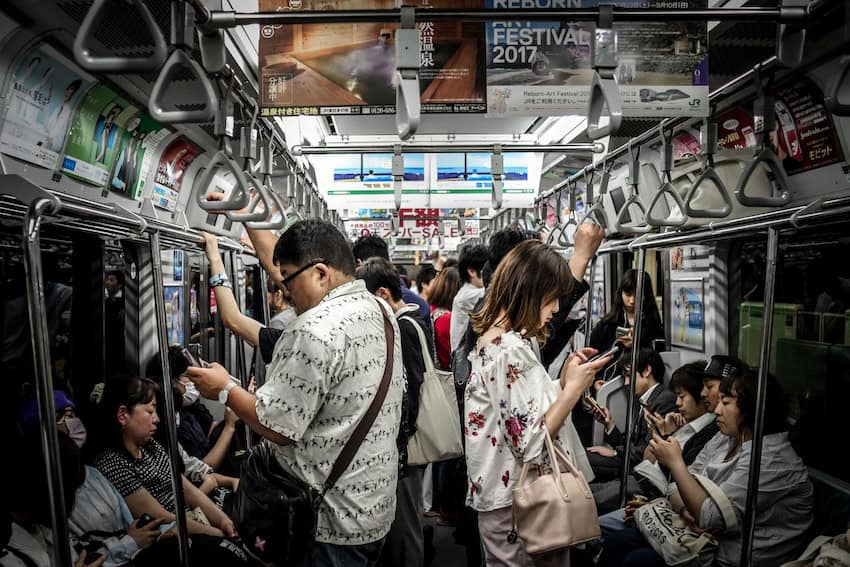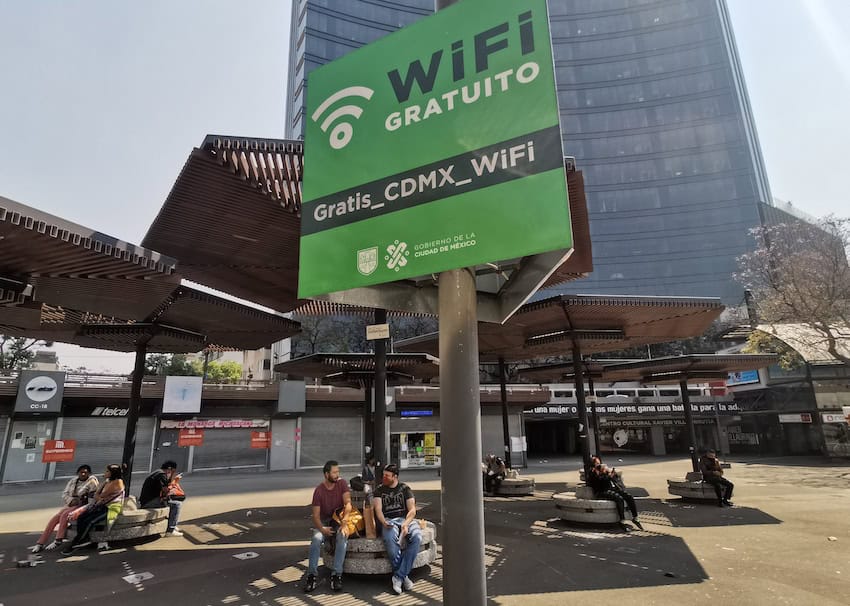More than 80% of people in Mexico are internet users according to a 2023 survey, an increase of almost 10 points in the space of just three years.
However, there is still a significant digital divide between people who live in urban areas of Mexico and those who live in rural parts of the country.

A total of 97 million Mexicans aged six and above are internet users, according to the results of the 2023 National Survey on the Availability and Use of Information Technology in Homes.
That figure is equivalent to 81.2% of the Mexican population aged six and over, reported the national statistics agency INEGI, which conducted the survey in collaboration with the Federal Telecommunications Institute (IFT).
The percentage of the population that uses the internet increased 2.6 points compared to 2022; 5.6 points compared to 2021; and 9.7 points compared to 2020. Compared to 2015, the figure was up 23.8 points.
The number of internet users in Mexico increased by 14 million between 2020 and 2023. Compared to 2015, the number of internet users rose by 35.6 million, or 58%.
Published on Thursday, the results of the survey provide a range of other technology-related insights.
The survey was conducted between June and August last year at about 65,000 homes across Mexico, INEGI said.
The digital divide between urban and rural Mexico
INEGI and the IFT found that 85.5% of Mexicans who live in urban areas use the internet, while 66% of those who live in rural areas are online. That leaves a gap of 19.5 points.
While still significant, the gap declined from 27 points in 2020; 25.1 points in 2021; and 21.5 points in 2022.
The percentage of people who use the internet in rural areas rose from 51.2% in 2020 to 66% in 2023, an increase of 14.8 points.
Increasing internet connectivity in rural areas has been a goal of the current federal government.
Javier Juárez Mojica, interim president of the IFT, told a press conference on Thursday that 2.5 million Mexicans are unable to use the internet because they don’t have access to a connection. He said that 2.5 million others don’t have sufficient money to pay for a connection, while 12.5 million Mexicans are not online because they don’t know how to use it.
Which states have the highest and lowest proportions of internet users?

Quintana Roo, home to tourist destinations such as Cancún and Tulum, ranks first, with 91.6% of the population aged six and over classified as internet users.
The only other state with more than 90% of its population online in 2023 was Baja California (90.9%).
At the other end of the spectrum, Chiapas ranked last among Mexico’s 32 federal entities for internet connectivity. Just 59.9% of residents of the southern state were found to be using the internet when the survey was conducted in the middle of last year.
Oaxaca ranked second last with 70.6% of people connected.
Mexico City (88.8%) is among nine entities where 85.1-90% of the population are internet users. The other states in that category are Jalisco, Baja California Sur, Tamaulipas, Sonora, Nuevo León, Colima, Durango and Sinaloa.
The percentage of internet users was between 75.1% and 85% in 16 states.
In addition to Chiapas and Oaxaca, the percentage of the population using the internet was below 75% in Veracruz, Guerrero and Puebla.
How does Mexico compare to other countries?
INEGI compared internet connectivity levels in Mexico to those in a selection of other countries.

Data from 2022, when 78.6% of the Mexican population used the internet, shows that Mexico was behind South Korea, the United States, the United Kingdom, Sweden, Spain, Germany and Chile, all of which had connectivity levels above 90%.
Among the countries included in INEGI’s selection, Mexico only ranked ahead of South Africa and Colombia.
Data published by the World Bank shows that the percentage of the population that uses the internet in Mexico is at the same or a similar level to the percentages in China, Paraguay, Peru and Uzbekistan.
The vast majority of young Mexicans are connected
The survey found that 96.7% of Mexicans aged 18-24 use the internet. That percentage — an increase of 6.5 points compared to 2020 — was the highest among all age cohorts.
The percentage of internet users was also above 90% for the 25-34 and 12-17 cohorts and just below that level for those aged 35-44.
Internet usage was lowest among Mexicans aged 65 and above, with just 39.2% of that cohort online. However, that percentage increased 15.2 points compared to 2020.
Just under seven in 10 Mexicans aged 55-64 — 69.2% — use the internet, the survey found, up from five in 10 in 2020.
Usage was slightly higher among children aged 6-11, with 71.4% of that cohort found to be connected. That percentage declined from 74.9% in 2021, when some students were still studying online due to the COVID-19 pandemic.

Internet usage is slightly more prevalent among women
The survey found that 81.4% of women and girls use the internet, while the figure for men and boys was 81%. It was the first time that INEGI found that the percentage of internet users was higher among females than among males.
The percentage of female users was higher among all age cohorts except the 65 and older category, the 25-34 group, and the 18-24 division (in which 96.7% of both women and men are online).
How many hours do Mexicans spend online per day?
Mexicans spend an average of 4.5 hours online per day, the survey found.
Young adults aged 18-24 spend more time online than any other age cohort, averaging 5.9 hours in each 24-hour period or around one-quarter of their entire day.
Children aged 6-11 use the internet 2.5 hours per day, the shortest period among all age groups.
The survey results show that the time people spend using the internet generally declined compared to the pandemic years of 2020 and 2021.
Children aged 12-17, for example, were using the internet for an average of 5.6 hours per day in 2020, but only 4.7 hours in 2023.
Other survey results
- The most common reasons Mexicans use the internet are to communicate; to access social media; to access entertainment; to watch video content; to read newspapers, magazines and books; and to look up information.
- Based on the survey results, INEGI estimates that 97.2 million Mexicans, or 81.4% of the population aged six and over, have cell phones. That percentage has increased 6.3 points since 2020.
- The smartphone is overwhelmingly the preferred device for connecting to the internet among Mexicans. More than 97% of internet users in Mexico connect via their phones, while only 44% use a computer to log on.
- Just under 44% of Mexican households have at least one computer (desktop, laptop or tablet).
- Among Mexicans who buy things online, personal products such as clothes and make-up are the most common purchases, followed by household goods, food and beverages and taxi/ride-share services.
- Almost 90% of homes in Mexico City have an internet connection, but the figure in Chiapas is just 44.3%.
- Nine in ten homes across Mexico — 90.4% — have a television. However, the figure is below 80% in the southern states of Oaxaca, Chiapas and Guerrero.
- Just over 30% of households have access to at least one streaming service. That figure rises to 35.7% in urban areas and falls to 9.5% in rural parts of the country.
- Around one-third of Mexicans — 33.6% — listen to the radio. That figure is down from 35% in 2020.
With reports from El Economista and EFE
